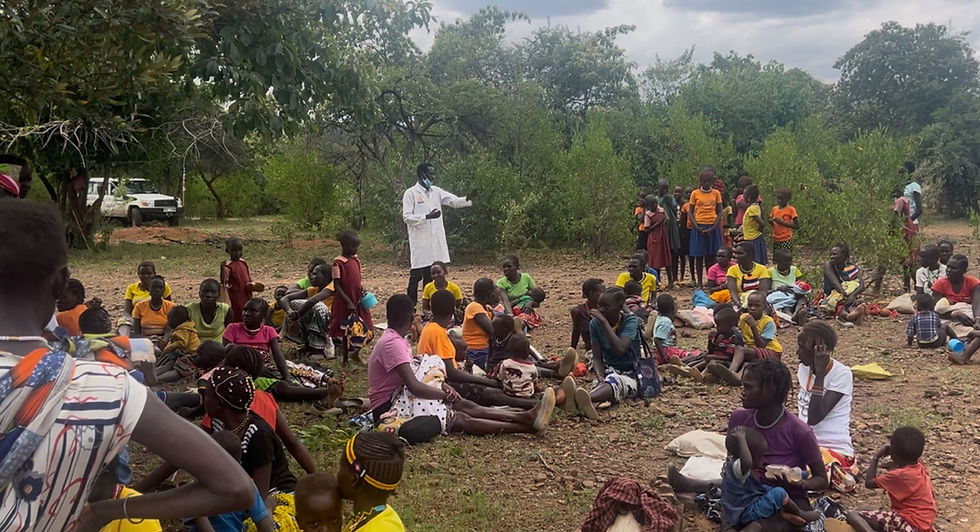A Vignette from East Pokot
- Hugh Shirley

- Jul 28, 2020
- 3 min read
Updated: Jul 15, 2023
There is a mountain behind the TERMES center. Beyond the dusty road passing through Chemolingot town, the mountain rises in the distance in an act of defiance against the flat, dry landscape over which it presides. To some, the mountain is a nuisance - the cell tower that provides an internet signal to the TERMES center hides behind it, so you have to get your phone in just the right position to get a connection – and to others, it’s a landmark, a point of reference that guides them to town. To me, the mountain was a reminder of the progress that’s been made and the work that has yet to be accomplished in Kenya.
In the heat of the day in Baringo County, everyone tries to stick to the shade. The sun beats down relentlessly and makes any journey risky. On a trip to conduct interviews and collect data from Nginyang Health Clinic, a 30-minute ride from Chemolingot by boda-boda, I experienced how draining the heat can be, even in the cooler months. I traveled there with Mwatela Kitondo, the project data manager, and a fellow Northeastern undergrad, Sukanya Mittal. After finishing up at the clinic, we decided to walk back to the crossroads where we would turn to head back to the TERMES Center. We had asked the boda-boda drivers to pick us up at Nginyang, but figured they’d stop when they saw us walking along the route back to Chemolingot. We got about two hundred feet from the health clinic before I realized the horrible mistake we had made.
The beautiful landscape stretched for miles in all directions, unbroken except for the distant mountains. As we marched along the roadside and sipped water sparingly, I realized how significant the burden of the environment and the distance between home and hospital is to accessing healthcare. Receiving timely, affordable healthcare is a basic human right, a right that hasn’t been realized in many parts of the world. Whether it’s a five-mile walk under the oppressive sun or an hours long drive through rural America, the distance one must travel to get the care they need can be a deterrent to seeking care altogether. We can work to reduce the burden that vast distances place on individuals seeking care by organizing mobile clinics, conducting outreach and education, expanding infrastructure, and training healthcare workers in rural areas. Luckily for my team, we eventually came to the crossroads and were picked up by some boda-boda drivers who took us back to Chemolingot.
The next morning, Mwatela, Sukanya, and I got up early to meet Robin, the TERMES Center’s security guard and our hiking guide, for a hike up the mountain. Dawn had just broken, and the air was still cool as we walked along the road leading out of town. As we neared the base of the mountain the road gave way to the underbrush, Robin found a solid stick to beat off any snakes we might encounter along the way. There were no trails or markers to guide us, only Robin new the way from his many boyhood trips up the mountain. Along the way, we passed dozens of abandoned anthills, where sandflies, the vector for leishmaniasis, would breed. As we crested the summit, the sun had just peeked through the morning clouds, casting beams of light across the landscape. From our vantage point, we saw Tiaty stretch for miles around us. Chemolingot town was waking up below us as locals went off to church. The view was a stark reminder that Chemolingot Hospital was the only hospital for many kilometers around, and that improving access to healthcare for communities in Tiaty continues to be an essential goal for ACCIH. As the sun began to burn away the morning clouds, and the temperature began to rise, we descended the mountain and walked back into town, carrying that reminder with us as we got back to the work of the day.
by Hugh Shirley








Comments